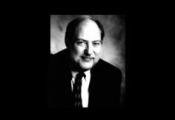You may respond to this posting by going to "Contact Us" at the Panim Hadashot website. I will be glad to post your response if it will aid in creating a conversation on the subject.
Exploring the Impact of Panim Hadashot Part 6 in a Series of Reflections by Rabbi Dov
Gartenberg
An Alternative High Holidays for Attracting non-Synagogue Oriented Jews
Panim Hadashot initiated a unique High Holiday event for in 2005 and 2006 which
attempted to attract Jewish people who wanted to mark the High Holidays in different
ways. The approach involved an emphasis on interactive study over prayer, brief
prayer and song over long services, and a revival and recasting of traditional meals
associated with the New Year. People did not have to come to the entire program, but
picked out what was interesting to them. In the upcoming short pieces I will
describe each piece and the approach we took to connecting with independent and
disaffected Jews.
You may respond to me by going to "Contact Us" at the Panim Hadashot website.
Study over Prayer
I had observed over my career that many people were uncomfortable with the prayer
services of the High Holidays. Would it be possible to expose people to an
experience of dynamic study to explore the spiritual themes of the holiday in place
of the traditional emphasis on prayer? Would people resonate to the holidays with
collective study instead of communal prayer? We discovered that the advantage of
study was that it allowed people to explore openly their ambivalence about
traditional themes. It gave people the opportunity to be exposed to Jewish wisdom
and debate over the spiritual themes embedded in the prayers, themes and scriptural
readings of the holidays.
The first year of our new approach focused on the theme of Teshuvah-repentence. On
Rosh Hashannah and Yom Kippur afternoons, I invited John and Julie Gottman,
nationally respected experts on marital relationships, to join me in the study and
discussion of texts on Teshuvah. Over 100 people attended each session as well as
other sessions on the texts of the holidays.
The Gottmans added their insights from their studies about relationships. I shared
with people the great texts on Teshuvah from the Bible, Talmud, and Maimonides. The
outcome was practical and meaningful to participants: Make teshuvah with 3 important
people in your lives between Rosh Hashannah and Yom Kippur.
The study had a real impact in that it imparted how to do a mitzvah and to
participate in a meaningful experience of the holidays. The barrier to participation
was low, no Hebrew skill or liturgical expertise was required. Both secular and
religiously oriented Jews could find meaning because the topic personally touched
them in one way or another. (We also held the sessions in the afternoon so as to not
conflict with those who wanted to attend synagogue services. ) People could also
sense the connection between tradition’s insight into human character and modern
psychological insights into relationships.
We did achieve something that is difficult to do on the holidays. People left our
experience with an appreciation of the depth and insight of Jewish tradition in ways
that had the potential to improve the quality of their own lives. By focusing on
study and taking a topic that had real meaning in people’s lives, people could
experience Judaism more directly and powerfully. People who would either not get to
a synagogue for the holidays or who for years had complained of uninspiring
encounters in synagogues left invigorated by our ‘Beit Midrash’.
In the next piece, I will write about our communal seders held on the high holidays.

Subscribe to:
Post Comments (Atom)

No comments:
Post a Comment